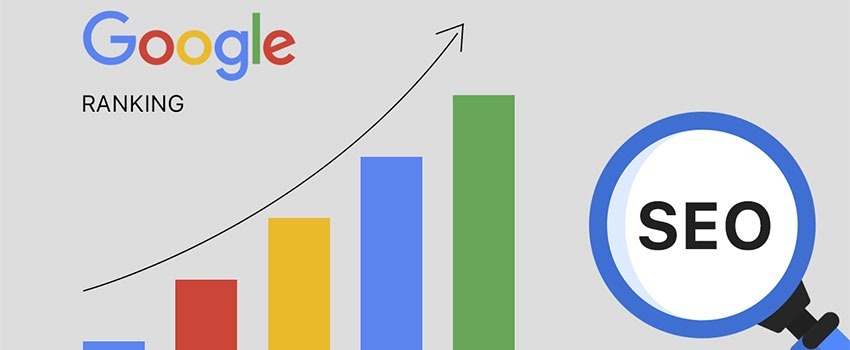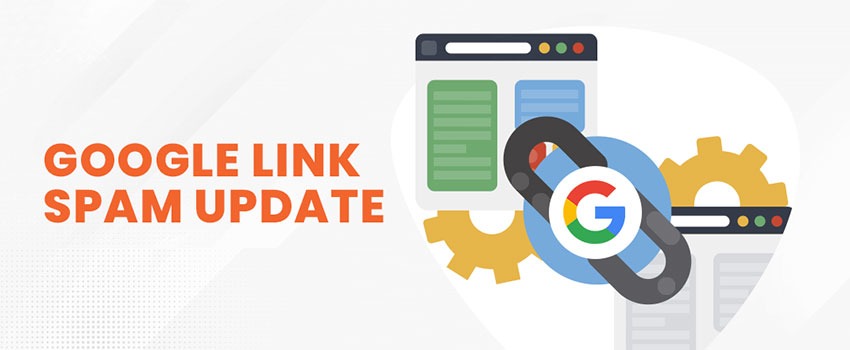Search is Smartly Changing With Google AI Mode
Search is rapidly changing and these changes do have real impact on user behavior. SEO folks are keenly watching these profound changes and some have insinuated there impact to mark the death of Search Engine Optimization (SEO). One of the most profound, of these changes, is the Google AI Mode. Google’s new AI Mode is a major step away from traditional search and has had significant impact on both user behavior and search traffic.
Let’s break down what it is, how it’s shifting the search experience, and what it could mean for your Click Through Rates (CTRs).
What Is Google’s AI Mode
Google’s AI Mode is a new feature in Search designed to give direct, detailed, comprehensive and well-reasoned answers to users’ questions with additional links to learn more.
It analyzes information from multiple sources and synthesizes it into a clear, concise response that aims to feel more like a conversation than a static summary. At first, it feels a lot like an AI Overview — same layout, same kind of summary — but with a box to ask follow-up questions at the bottom.
At a closer look, the AI mode comes with some more differences when compared to AI Overview and traditional search.
How Is AI Mode Different from AI Overview?
Simply put, AI Mode is an expanded version of AI Overview.
Here’s how it steps things up:
- More advanced reasoning: While AI Overview just summarizes information from across sources, AI Mode interprets it, connects dots, and offers its own conclusions.
- Better at handling complex questions: AI Overview works well for simple, fact-based queries, but AI Mode understands more nuanced, multi-layered, or open-ended questions.
- Follow-ups: You can ask follow-up questions, and the AI will respond based on the ongoing context.
- Multimodal understanding: In the Google app (via Google Labs on Android and iOS), AI Mode can also answer questions based on photos and images.
Google promises that AI Mode will deliver a more dynamic and personalized search experience, and is particularly helpful for queries that require deeper exploration and reasoning.
How to Access Google’s AI Mode
AI Mode isn’t a part of the search results just yet.
Just like AI Overview was initially rolled out to users in the U.S. (and later expanded to other countries), AI Mode is currently only available to U.S.-based users. It started as a feature for premium accounts but has since been opened up to all Google users in the U.S.
Once the location is sorted, you can head to google.com/aimode and join the waitlist. It took just a few hours for me to receive an email with access.
When you’re in, follow the link in Google’s email, and you’ll find AI Mode in a dedicated Gemini-like tab. From now on, you can switch to AI Mode directly from Google Search (it’ll take you out of the search results page to the same tab though). Experiment away!
A Bit of Context on Google’s AI Tools
While most people think of AI as starting with ChatGPT, Google’s been building AI tools for decades. But let’s fast-forward to the part that matters for everyday searchers.
Gemini is Google’s family of large language models, built by its DeepMind team. It’s basically Google’s version of GPT and now powers a bunch of AI features, including Bard (which has been rebranded as Gemini), Duet AI, and the new AI Overviews in Search.
Here, let’s zero in AI Overviews.
These were officially launched on May 14, 2024, as an experiment for U.S.-based searchers and have since expanded to global audiences. Research from Advanced Web Ranking (AWR) shows that AI Overviews appeared in 42.51% of search results in Q4 2024, marking an increase of 8.83 percentage points from the previous quarter.
With such a wide rollout, there’s a good chance you’ve come across them already. Here’s what a search results page with AI Overviews typically looks like:
Unlike standalone AI tools, Gemini in this case works alongside Google’s established ranking systems. That means when you see an AI Overviews, it’s blending Google’s usual web results with a conversational summary generated by Gemini. You’ll still get source links, images, and product listings right in the mix.
So instead of making you scroll through a bunch of pages, AI Overviews pull together the most useful info in one place, in a more natural, easy-to-digest format.
And as AI Overviews continue to gain ground in search, Google is rolling out a new search feature — AI Mode.
So… Is AI Mode Any Good?
Let’s put it to the test and see how it stacks up against AI Overviews.
First, let’s run a basic query: “What will be the most popular spring break destinations this year, using regular Google Search with AI Overview enabled.
AI Overview does its thing: it analyzes the input, considered user location, pulls results from various sources, and stitch together a quick summary.
Let’s try to make things a bit more specific:
“what will be the most popular spring break destinations this year with a 6-month-old baby”
Surprisingly, AI Overview handles it pretty well. It adjusts the suggestions based on the added context and still gave a relevant summary.
Now, here’s what happened when the same thing query is made using AI Mode:
The initial response look similar but for a subtle shift. The first line suggest that AI Mode wasn’t just summarizing existing info; it was also applying a bit of reasoning to land on a more thoughtful recommendation.
Then let’s consider when we conduct our test with the follow-up feature:
Asking a related question without repeating the full context, and AI Mode picks it up instantly. It remembers earlier query, understand the added detail, and return a more detailed, well-reasoned list of baby-friendly spring break destinations.
The verdict:
AI Mode definitely takes things up a notch—but in practice, the structure and content of its responses aren’t drastically different from AI Overview. You can see it trying to reason through the query, but the end result still feels pretty similar.
That said, the follow-up feature is genuinely helpful when you’re exploring more complex questions without having to start a new search every time.
Both AI Mode and AI Overview save you from having to click through multiple links in a lot of cases, which is both incredibly convenient and a bit unsettling. The more AI pulls answers directly from content, the fewer clicks publishers get. And if high-quality content stops getting traffic, it becomes harder to sustain — meaning the AI might eventually have less accurate information to pull from.
How Will AI Mode Affect CTRs?
AI Mode isn’t live in Google Search just yet, but we’ve already got some juicy data on how AI Overviews are shaking things up — and it’s not exactly reassuring.
- Fresh research from Ahrefs shows a 34.5% drop in average CTR for the top-ranking page when an AI Overview appears, compared to similar queries without one.
- Amsive reports that keywords triggering AI Overviews saw a 15.49% decline in CTR on average.
- Branded keywords were the exception — those with AI Overviews actually saw an 18.68% boost in CTR. That’s at least some good news, huh?
One thing’s clear: if AI keeps taking up prime real estate in search results, CTRs are likely to drop further. It’s possible that links inside AI Overviews get more clicks, but Google doesn’t break those out in Search Console — at least not yet. Maybe that’ll change down the line.
Also read:
How Your Content Can Be “Featured” in Google SERP
SEO Facts Revealed on Google Webmaster Central
How to Rank in Google AI Overview
Seek to Rank High in Traditional Organic Search
Google AI mode draws content from posts and organic search. Ranking at the top of traditional search engine without the AI overview is therefore very helpful. Findings show that though Google AI Overview can draw content from any website, no matter the ranking position, websites that rank at the top of the Google search engine get listed in AI Overview than those with poor ranking.
Match The Content and Question Extremely Closely
In traditional organic search, Google is known not to encourage exact match keywords in titles, anchor texts and even in website content. However, while it will be advised to tread cautiously, we have found that matching your content closely to a search term has helped websites to be featured in Google Overview. While you do not need to focus on keyword rich content and focus on exact match, partial matches which captures the keywords for which you intend your website to be ranked for can be helpful in getting your content to be listed in Google AI Overview.
Make Texts Shorter and More Targeted
Google AI Overview tend to love shorter and precise, more targeted texts that appear to be preferential by being placed early in website content. We recommend that targeted keywords should appear within the first twenty words of your page.
The advantage seem to stem from the fact that shorter texts boost readability and can be easily displayed in full in the search engines. It further suggests that words that appear early in page content are important for the page content. In traditional SEO practice, these practices were seeing to be obsolete. However, they now seem to be relevant and influential in getting your content to be featured in AI Overview.
Notwithstanding, the best practice will be to moderate the use of keywords in page content and ensure that content flows naturally. Remember that Google have become very smart and can easily detect unnatural patterns which could cause a penalty.
Ultimately, Google know best but we have found that shorter and targeted texts that simply hit the nail on the head tend to enjoy the love of Google AI Overview.
Provide Simple Answers With High Readability
Building your content to provide simple answers while writing highly readable content can help your content to appear in Google AI Overview. Highly readable content are usually short. A rule of the thumb is to keep sentences within twenty words and building shorter paragraphs.
Request Indexing in Google Search Console
Generally, indexability is critical in content listing in Google search. Ensure that there are no limitations to your content indexing. One way to ensure that Google reviews your content and considers it for listing in Google AI Overview is to submit it for indexing using the Google Search Console.
Final Words
We recommend that you continue to build high quality content and do not neglect that recommendations and guidelines for traditional SEO. Continue to pat attention to on-page and technical SEO. Also pay attention to user experience, indexability and precise answers to the topics and issues you try to address, amongst others, as we have described above.










